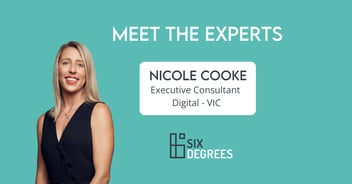
Is NPS the be all and end all to measuring customer experience?
By: Michelle Young

Probably the best-known and most widely used metric for customer experience (CX) is the Net Promoter Score (NPS). But is NPS really the best way of measuring CX?
A classic customer-based business metric, NPS shows the percentage of customers who would recommend your business to others. NPS is popular because it’s easy to understand and administer, and provides a comparable benchmark. However, because NPS is based on the response to a single question, one of its biggest drawbacks is that it may not accurately reflect the diverse interactions and experiences customers have with your company throughout the entire customer journey. Invariably, further research is required to understand the reasons behind customer responses at various stages of their customer journey.
What other metrics are available?
Some alternative metrics to NPS include:
Customer Effort Score (CES), which measures how easily exchanges between the customer and the company are completed, with a focus on customer support.
Customer Satisfaction Score (CSAT), where you ask your customers to rate how satisfied they are.
Churn Rate, which is a measure of the percentage of customers who stop using your product within a given time frame.
Customer Lifetime Value (CLV), which is a measure of the total worth of a customer to a company over the entire time of that customer’s relationship with the company.
A broader view – using customer journey analytics
Regardless of which CX metrics you use, an important element of measuring customer experience is the application of metrics at the appropriate stages during the customer journey. In her post, Measuring Customer Experience Beyond NPS, customer experience expert Swati Sahai of Pointillist, argues that using customer journey analytics is the optimal way to measure CX as it better tells the story of the customer’s entire experience, offering a holistic view of the customer’s journey from initial contact, through engagement and into the long-term.
Sahai discusses five ways that CX leaders can use customer journey analytics to effectively measure customer experience and improve the return on their company’s investment:
Using the right CX metric at the right point in the customer journey. Given customers have multiple touch points throughout their experience, companies need to pick the most appropriate metric to use at each touch point.
Asking for feedback through the customer’s preferred channel at the optimal time. Aside from making the feedback process short and easy, it is important to engage with customers at the optimal time through their preferred channel. For example, instead of asking a customer to stay on the phone even longer to provide feedback, will an email or SMS be more effective?
Calculating your customer experience metrics for individual behavioural segments. Not all customers behave the same way, nor do they have an equal impact on your revenue. Make sure your CX measurement efforts focus on your most valuable customers and to get more bang for your buck!
Monitoring CX metrics in real-time and over time. Creating custom dashboards can help you monitor metrics in real-time and track and report on them over time. Adopting this approach will give a business an ‘always on’ view of the customer experience being delivered across all of its touch points, as well as providing alerts when any changes in key elements of performance occur.
Determine your customer experience measurement priorities. Finally, customer journey analytics can be used to prioritise which customer experience metrics you monitor, report and act on. After analysing customer behaviour, you may realise you need to add metrics for key outcomes, perceptions and real-world behaviour you aren’t capturing or tracking properly or need to prioritise metrics aligned the most important points in the customer journey.
When measuring CX it is important to keep in mind the entire customer journey and view customer interactions in context. With customer journey analytics, you can identify the key stages, interactions and pain points that customers have with your company and focus on shifting the metrics that have the most impact on business outcomes.
If you work in the area of customer experience and are looking for your next opportunity, or are on the lookout for CX talent for your organisation, please reach out to Michelle.
Related


Meet the Experts: Nicole’s insights on the evolution of digital marketing
Welcome to our Meet the Experts series, where we spotlight the industry specialists at Six Degrees...

7 ways to revamp your EVP in 2025 to attract and retain talent
Gone are the days when office perks like foosball tables and free lunches were enough to attract...


 Accessibility
Accessibility